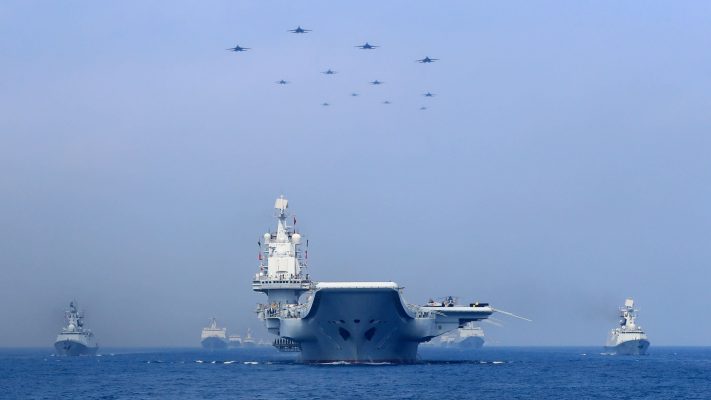
Washington: Amid growing Sino-US tensions, the United States Air Force (USAF) has ramped up flyovers of B-1B Lancer bombers over waters near China.
These came with increased military operations by both the US Navy and Air Force in the South China Sea, East China Sea, the Taiwan Strait and the Yellow Sea this year, while China’s military observers warned of rising risks of military conflict between the two countries.
In the latest announcement, the US Pacific Air Force said on Twitter on May 19 that B-1 bombers conducted a mission in the South China Sea, just days after training with the US Navy near Hawaii, “demonstrating the credibility of US air forces to address a diverse and uncertain security environment”.
Beijing and Washington remain locked in a war of words over each other’s handling of the Covid-19 crisis and the origin of the virus that has killed more than 3,24,000 people and infected nearly five million people around the world.
The blame game has caused rifts in an already strained relationship, affecting a range of activities, including journalism, trade, technology and the military.
The US Air Force deployed four B-1B bombers and about 200 airmen from Texas to the Andersen Air Force Base in Guam on May 1 saying the mission was to support Pacific Air Forces and to conduct training and operations with allies and partners.
Li Jie, a military specialist based in Beijing, said the deployments showed that the US was trying to keep up strategic deterrence with the US Air Force conducting 11 flights in March and 13 in April over the Taiwan Strait and South China Sea.
“Obviously, decision makers in the Pentagon are trying to use the bombers as a new tool in its strategic deterrence against China. We will see intensified B-1 interference into airspace over the Taiwan Strait and the South China Sea in May,” Li said.
On May 14, the Chinese navy started a 11-week military exercise in waters off the northern port city of Tangshan in the Yellow Sea. The US sent a warship through the Taiwan Strait on the same day marking the sixth passage of the strait by a US Navy vessel this year.
China is also on the way to upgrade its military strength. It put two new upgraded nuclear-powered strategic submarines into service last month and it is also considering the launch of a new generation of strategic bomber, the Xian H-20 supersonic stealth bomber, possibly within this year, says media reports.
Zhu Feng, director of international studies at Nanjing University, said tensions in the South China Sea had become increasingly “tense and turbulent” in the past three months and were closely linked to political and diplomatic conflict between the two countries.
“China’s tough response may further fuel the Trump administration’s push to contain China on other fronts, pressing ahead with the US’ Indo-Pacific strategy, an important tactic for the US to draw allies in the region over to its side and further alienate China,” Zhu said.








